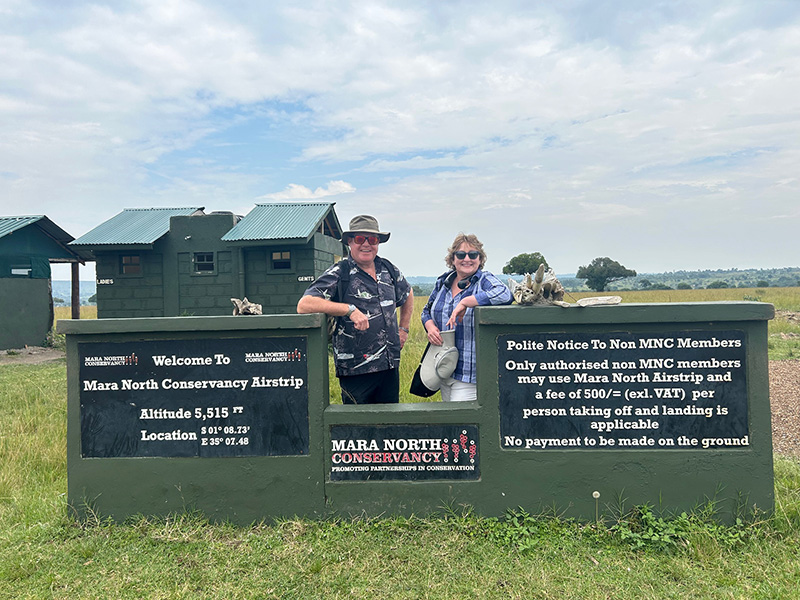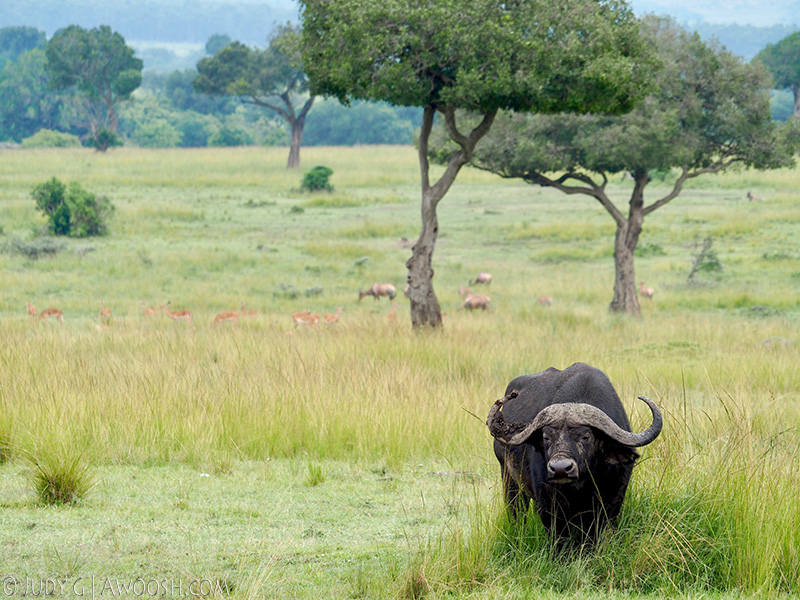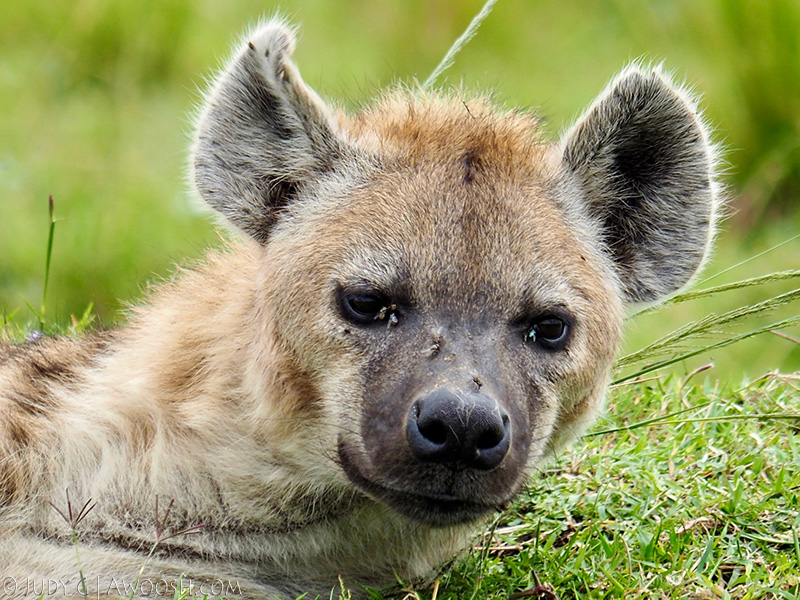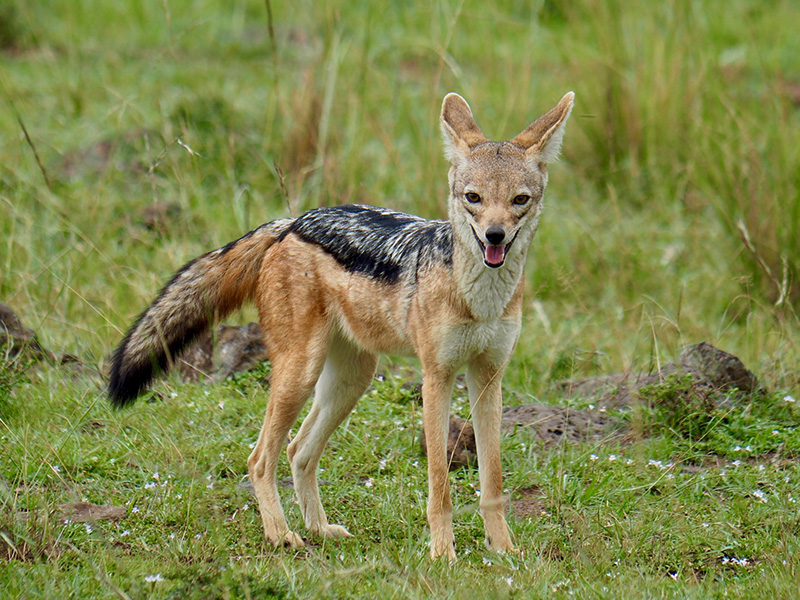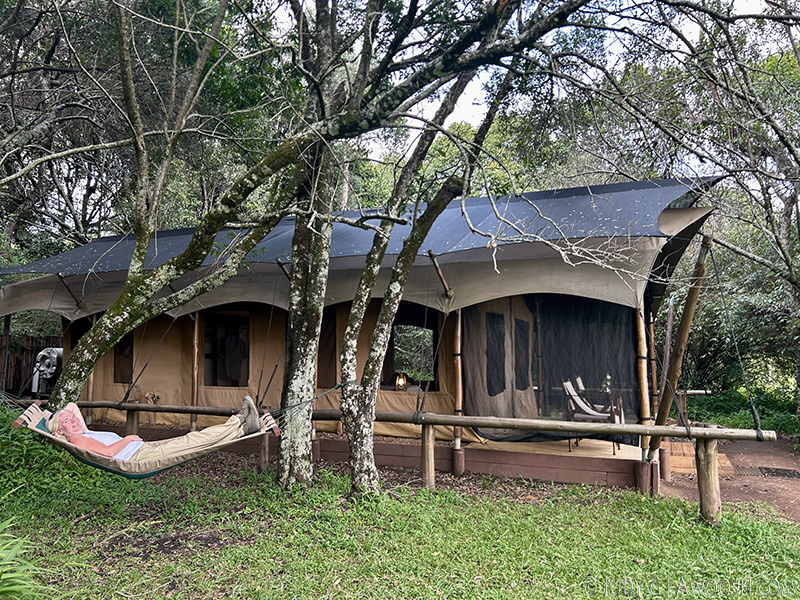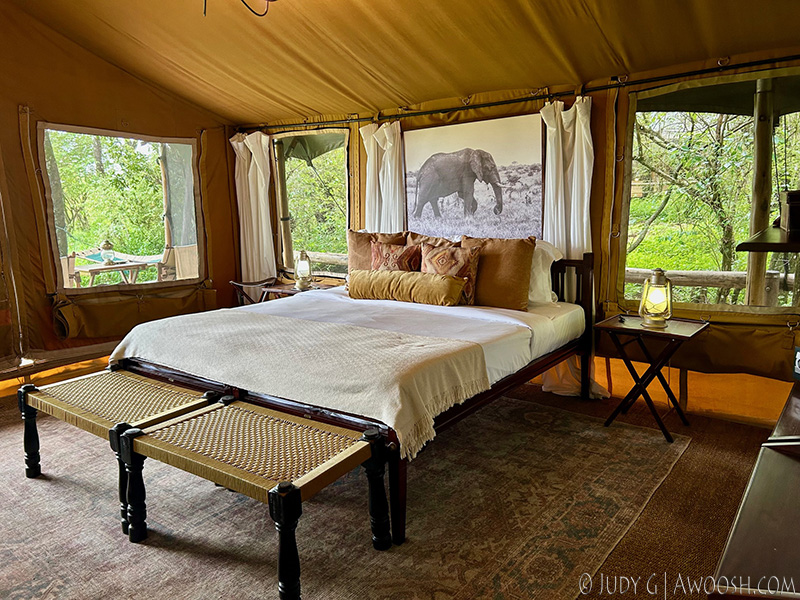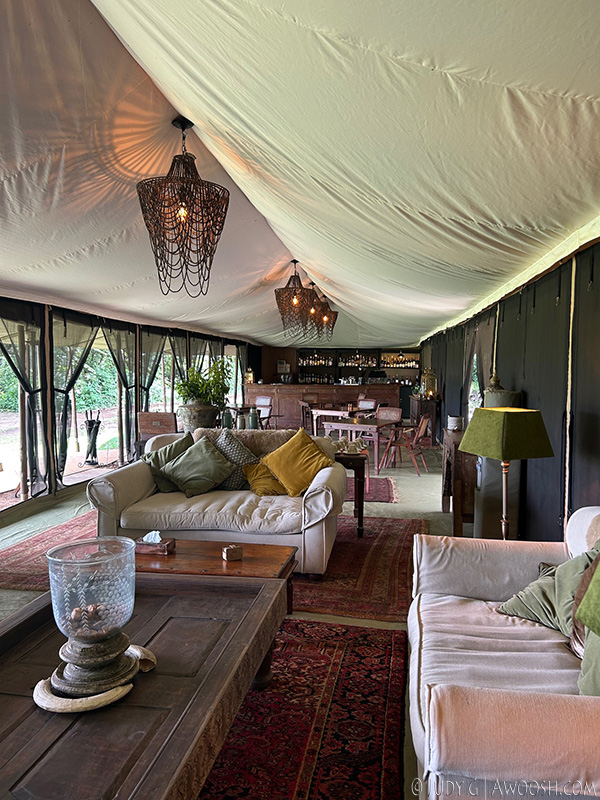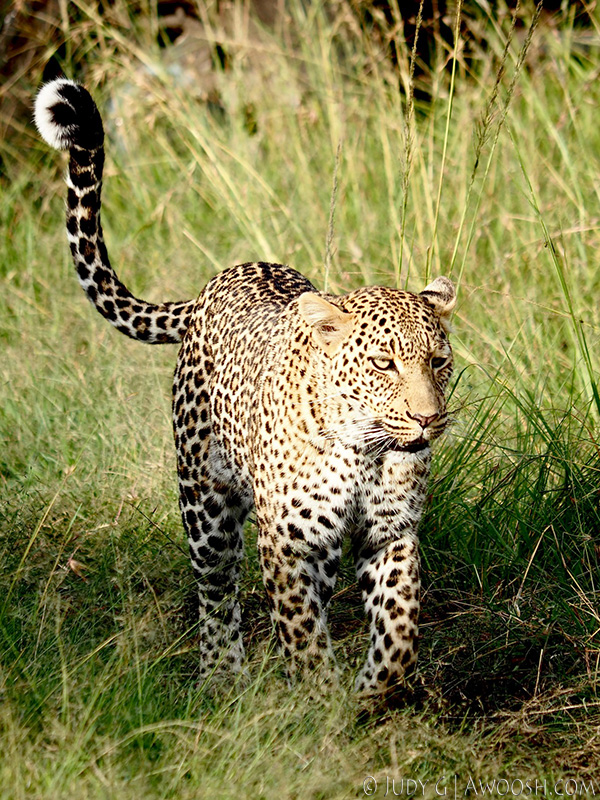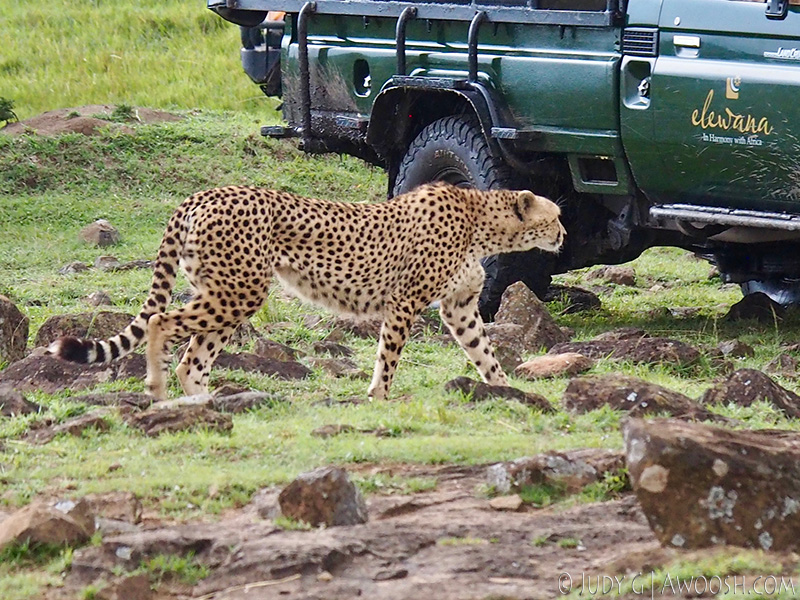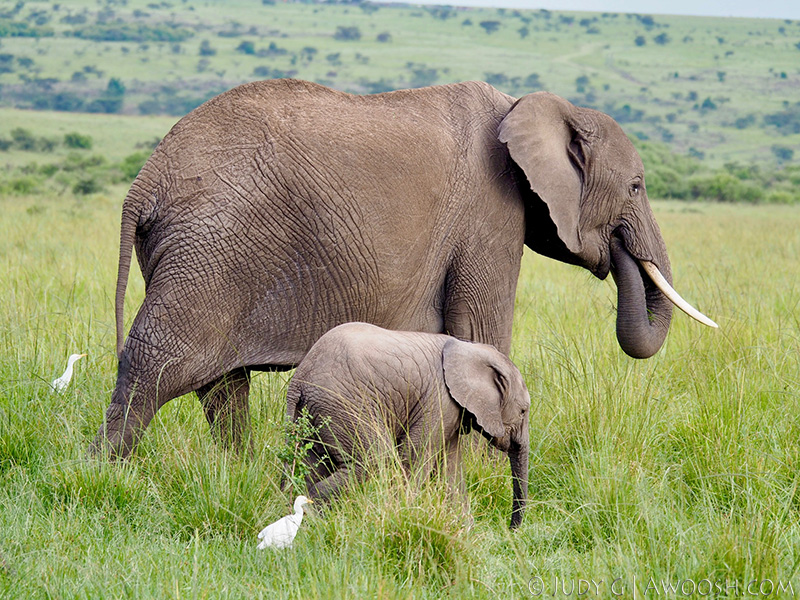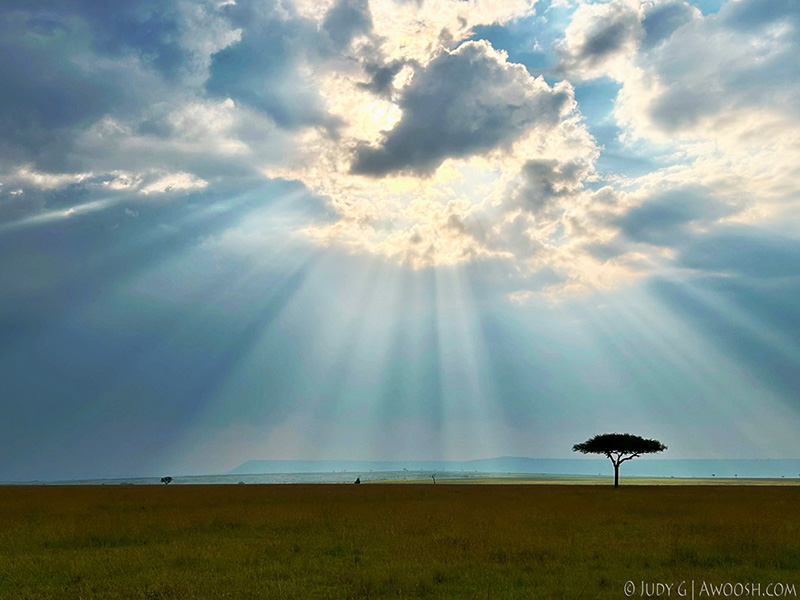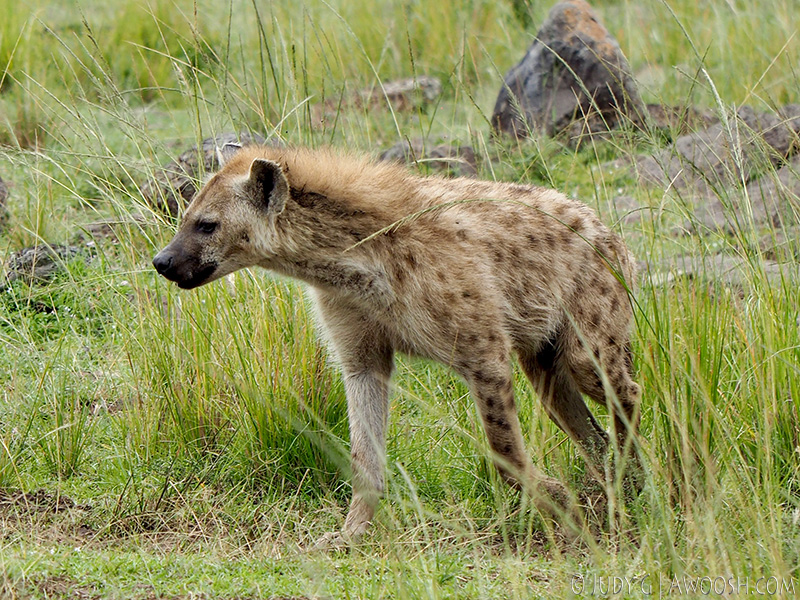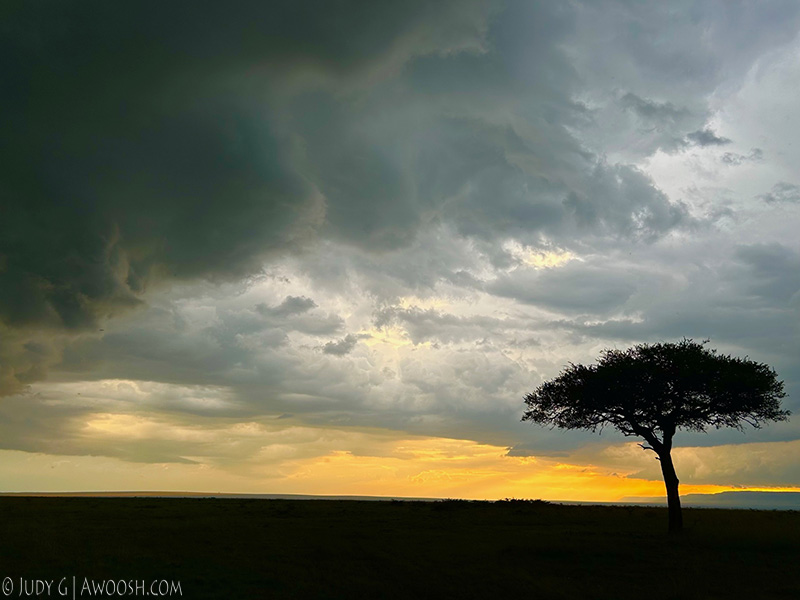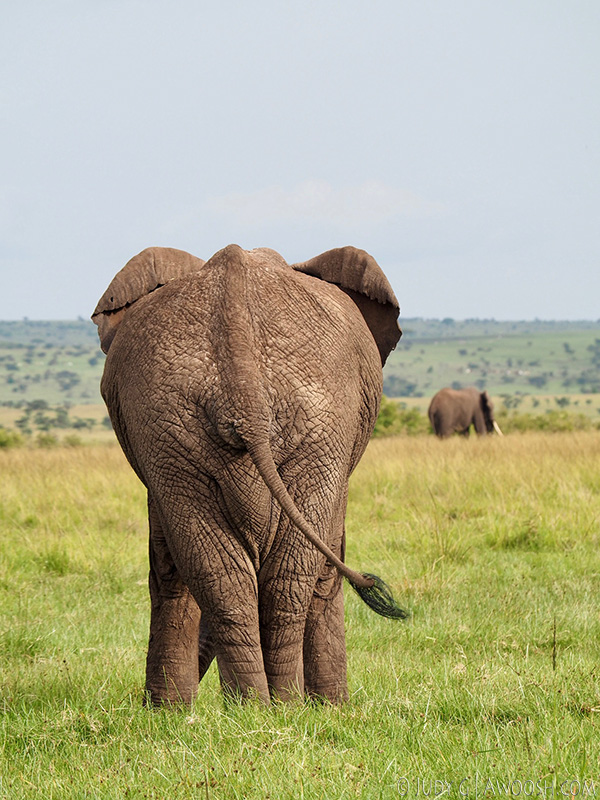Maasai Mara North Conservancy – Elewana’s Elephant Pepper Camp
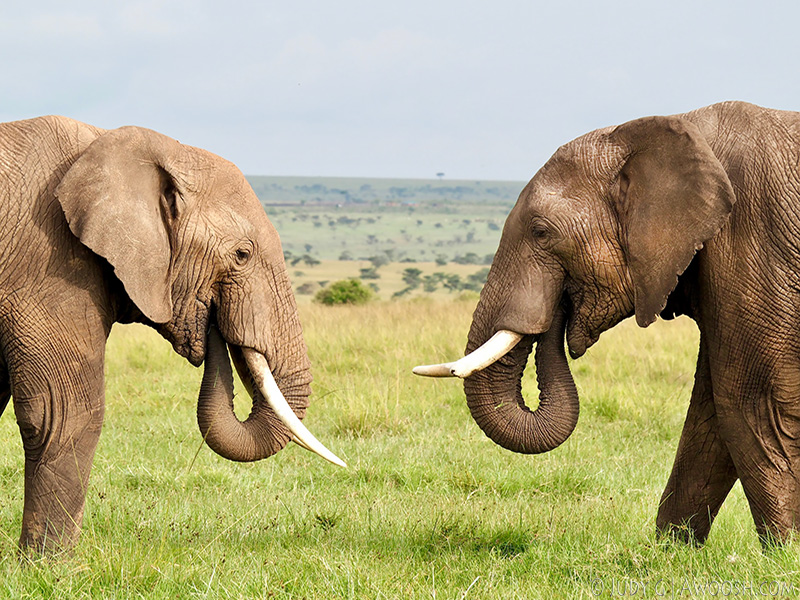
It was a sad farewell to Sarara — all of us left there with full hearts and feeling very inspired by the amazing conservation and social enterprise model that the Samburu and the Sarara Foundation have created together. But we were also ready for some more full on African safari game drives, and our last camp, Elewana’s Elephant Pepper Camp, located in the North Conservancy of the Maasai Mara, did not disappoint.
Our bush flight from the rural airstrip near Sarara to the North Conservancy airstrip was a little over an hour. We flew over waterfalls, forests, towns, and a massive crater, plus acres of greenhouses — Kenya is the largest grower of roses in the world. As we descended we could see the rolling plains of the Mara, with a wide, meandering, muddy river, dotted with hippos, and the grassy landscape punctuated with flat-bottomed trees that are ubiquitous to the area. Who knew that they were shaped that way by giraffes, which browse all of the lower leaves and branches that they can reach (up to about 18 feet), leaving cartoonish, mushroom-shaped trees in their wake?
Another lovely meet and greet at the airport, a cool towel, a cold beverage, and then, another unexpectedly awesome (game) drive to the camp. We saw a regal male lion that had left its daytime siesta spot for a drink, hyenas, a jackal, hippos, wildebeest and elephants. A giraffe or two as well. Quite remarkable, and it boded well for the next four days.
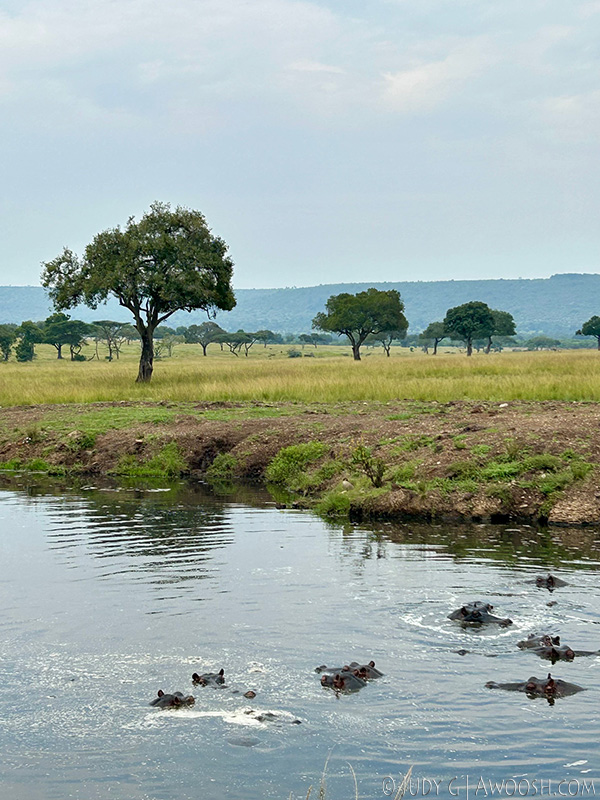
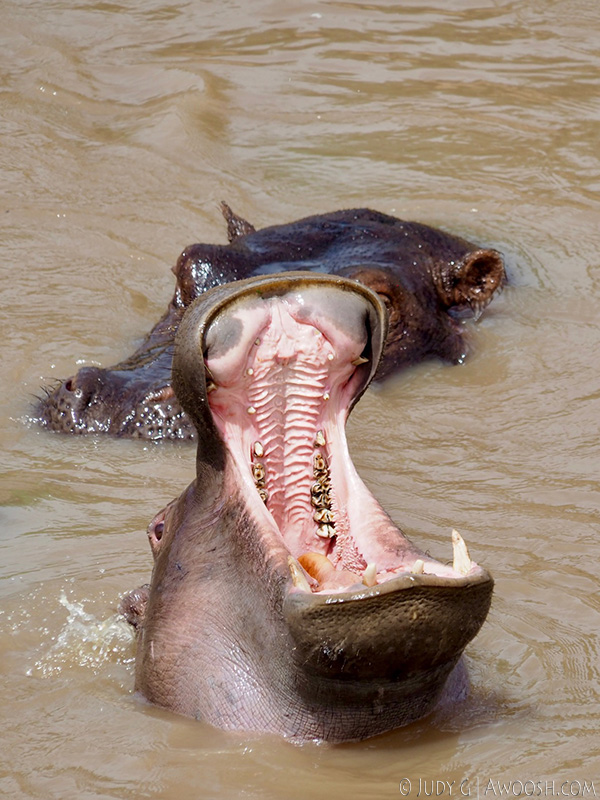
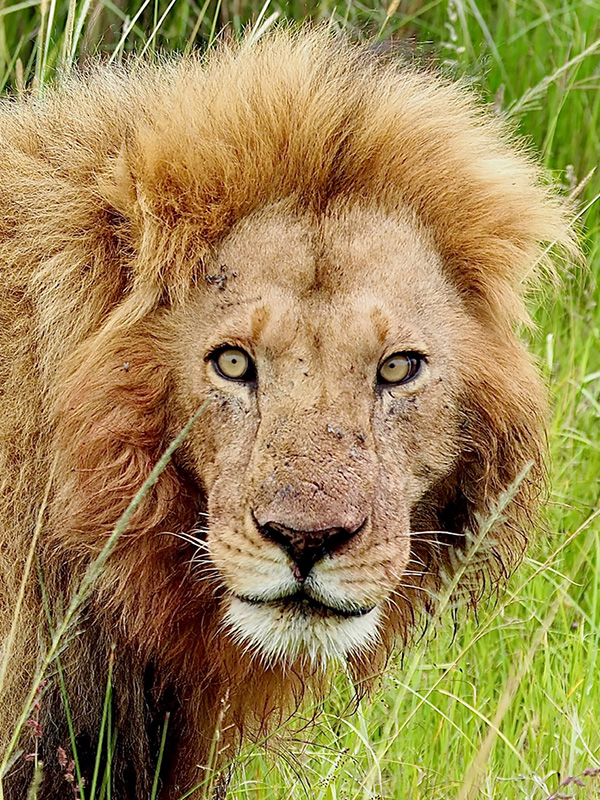
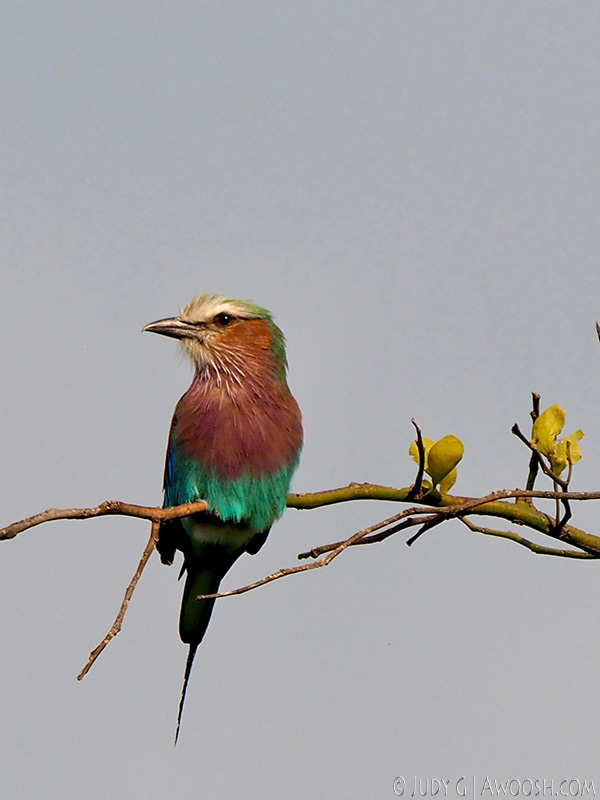
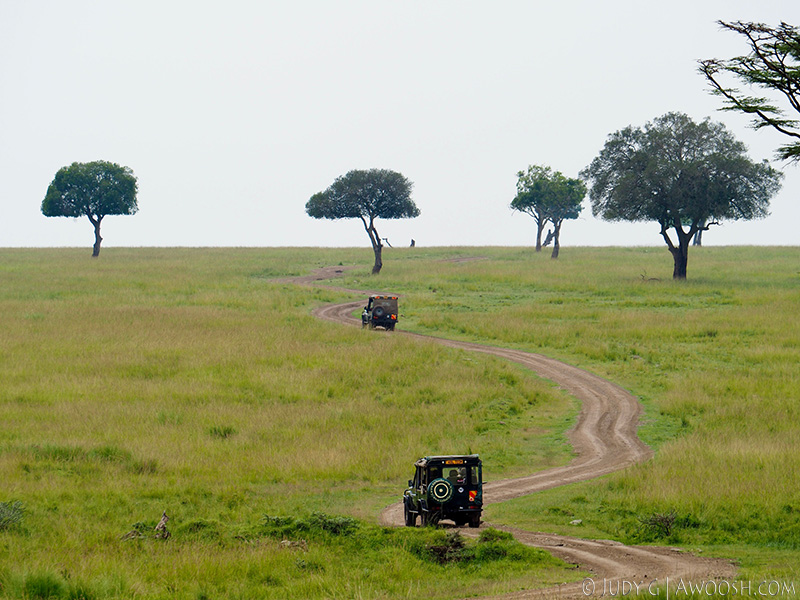
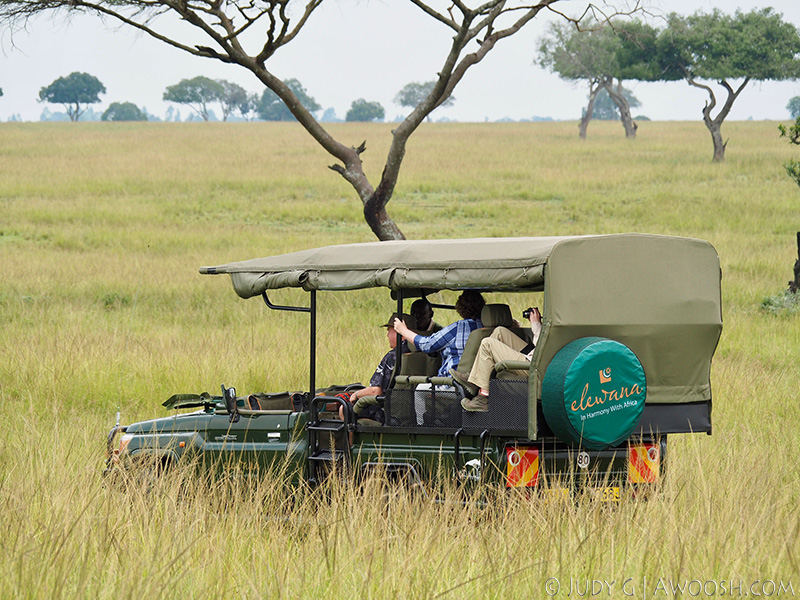
The Mara North Conservancy is another social enterprise success story. Local Maasai land owners, who are mostly cattle farmers, decided to form a large conservancy, which leases a big expanse of land to the various safari camps in the area, and with the lease income flowing back to the Maasai. The camps in turn employ people from the local communities, and support education and health care in these areas as well. Elewana’s Land & Life Foundation is an integral part of this sustainable tourism model.
Elephant Pepper is an old-school style tent camp located right in the thick of the conservancy. The camp is set in a copse of trees, bordered all around by open grasslands. Wild elephants roam everywhere – snuffling around the tents at night, snacking near the veggie garden at lunchtime, moseying by in the distance. At night you could hear them munching very close by, and lions and hyenas were near too. The camp has night watchmen who patrol around the tents and gently encourage the animals to keep their distance. These are also the guys who escort guests to and from their tents in the dark hours, shining their flashlights side to side from the path, into the trees, looking for eyeballs!
We were greeted on arrival by Moses, Elephant Pepper Camp’s manager — he’s an energetic and enthusiastic Kenyan who clearly loves his work. Moses is a great host, and was always around, checking in regularly to make sure that his guests were happy.
The camp has 10 tents, and I believe one tent has a couple of “rooms” in it, for families. The tents are sited in the trees, and so that they are quite cool and private. They all have a covered porch and a lovely view out over the grasslands, and are connected to the main lodge tent by pretty, sinuous paths.
The guest tents are really nicely set up — a very comfortable bed, a desk with charging station, a bench for duffel bags, cubbies and hangers for clothes, a small safe, and behind a canvas wall, his & hers antique-style sink stands, a shower, and a loo. It was unseasonably cool when we were in the Maasai Mara in January 2025 — with some pretty epic storms blowing through, but the tents held up (except for one that had a small unplanned water feature in it ;^). In the evening, while we were at dinner, they would come and pop hot water bottles in our beds to warm them up. Heavenly! I was very grateful that I had packed some warm layers to wear.
The tent zippers at the entry of the tents all meet at the bottom, in an inverted T, and we were instructed to use the carabiner they provided to fasten the three zippers together firmly – otherwise monkeys might break in and mess with your stuff! And we were warned not to leave any medications in plain view through the mesh windows, because those little monkeys are especially keen to pinch pharmaceuticals!
The main lodge is also a large, long tent, with a bar, dining area, and comfy lounge. There is a second, smaller dining tent that can be used for groups like ours. Lunch was served outdoors on the lawn one day, when the weather was nice, and there’s a big seating area there too, around a fire bowl. The food was all beautifully prepared and presented, and very delicious.
Like at Elsa’s Kopje, the morning safari required an early wake up. Coffee and light snacks in the main tent, and on the road by 6.30 am. This seems like an rough start time for a holiday, but early morning is when you are most likely to see the big cats still out, before they retire into the invisibility of their lairs under big bushy shrubs, where they go to get out of the heat of the day. Typically, a casual ‘bush breakfast’ would be offered around 9.30. On one morning, a delicious full sit down breakfast was offered on the bank of the hippo-infested river. Did I mention how a girl could get used to mid-morning mimosas while on safari?
James and Charles were our safari drivers and guides — both were very kind, capable and knowledgable. James is Samburu, and has guided in the area for 18 years. Charles is originally from Nairobi but felt the call of the wild and left there to become the accomplished guide and photographer that he is.
We saw multiple lions, and cheetahs, and on one exciting afternoon game drive, a sleek female leopard. I missed one morning game drive at Elephant Pepper, when others in the group saw a family of rare serval cats, as well as a pride of lions where mama had just killed a topi (a type of large antelope). They watched as she dragged it over a kilometre, fending off hyenas, to get it to an area where she could protect it. Her teenaged cubs were apparently no help at all, and just played around while she did all the heavy lifting. Kids these days!
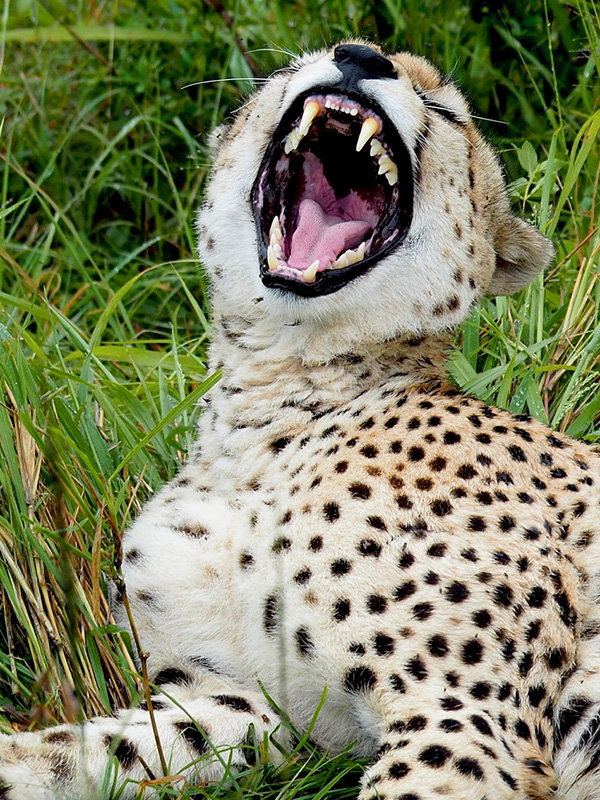
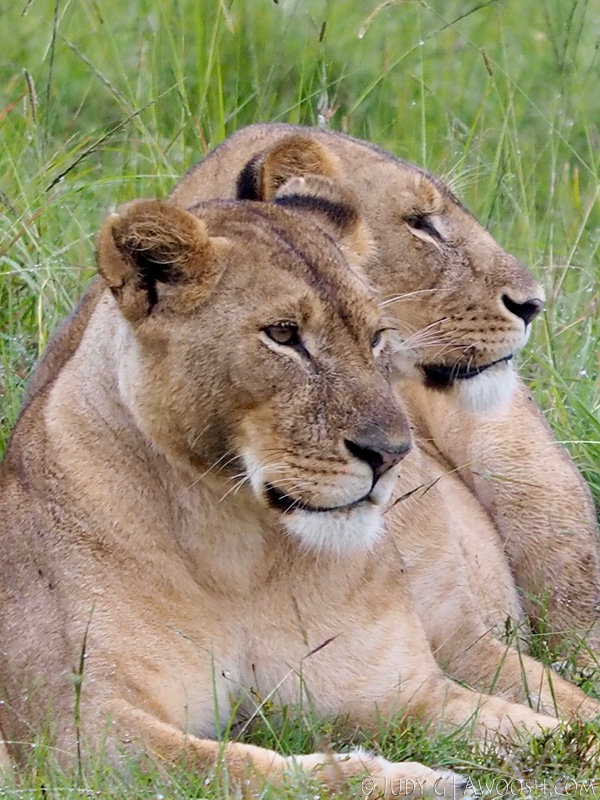
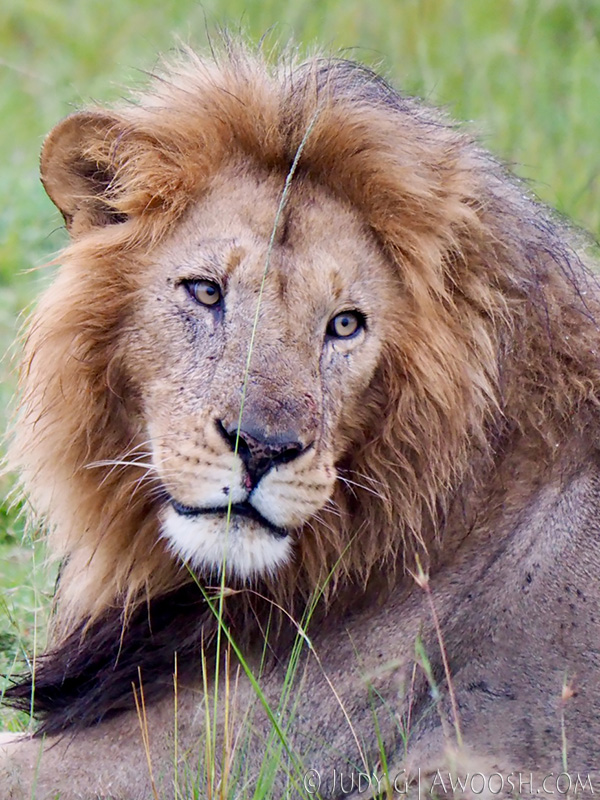
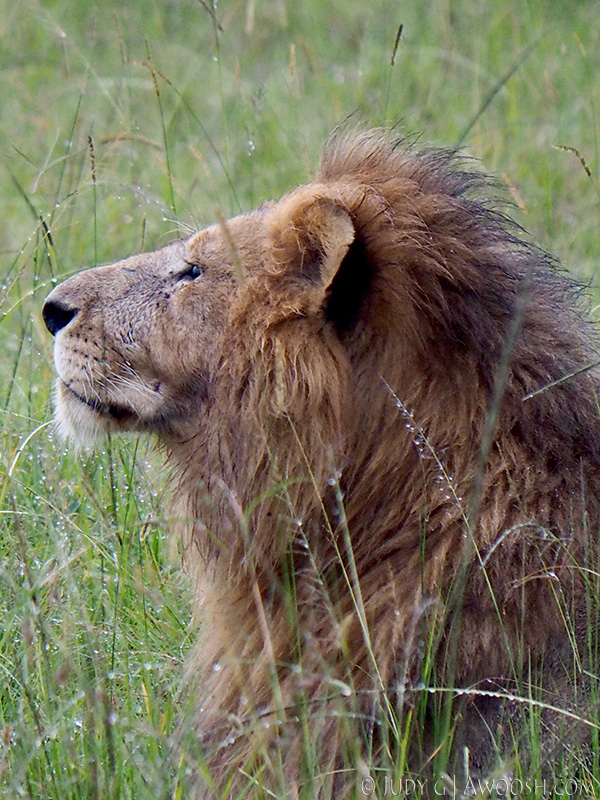
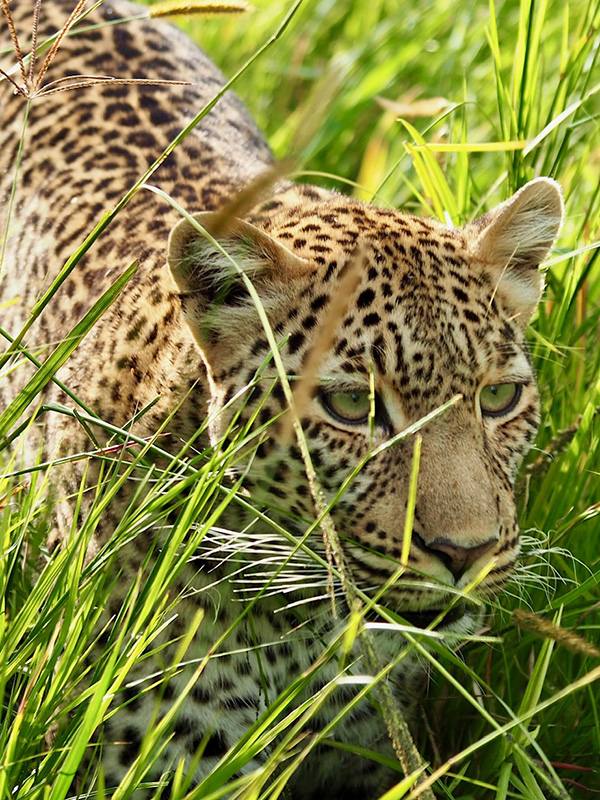
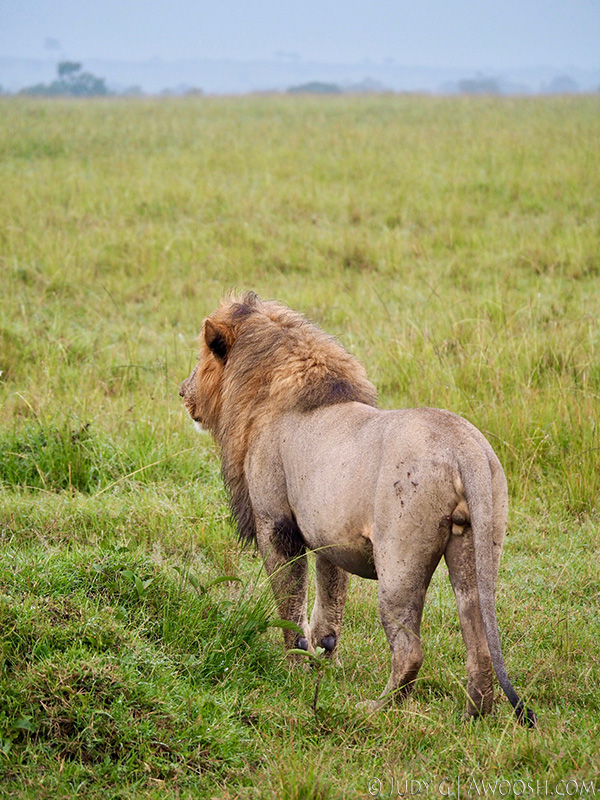
As the name of the camp suggests, you would expect to see elephants at this location — and we did, every day, all day, often in large matriarchal family herds or in smaller all-male gangs — everything from huge male animals with massive tusks to a teeny tiny little cutie that was less than a year old.
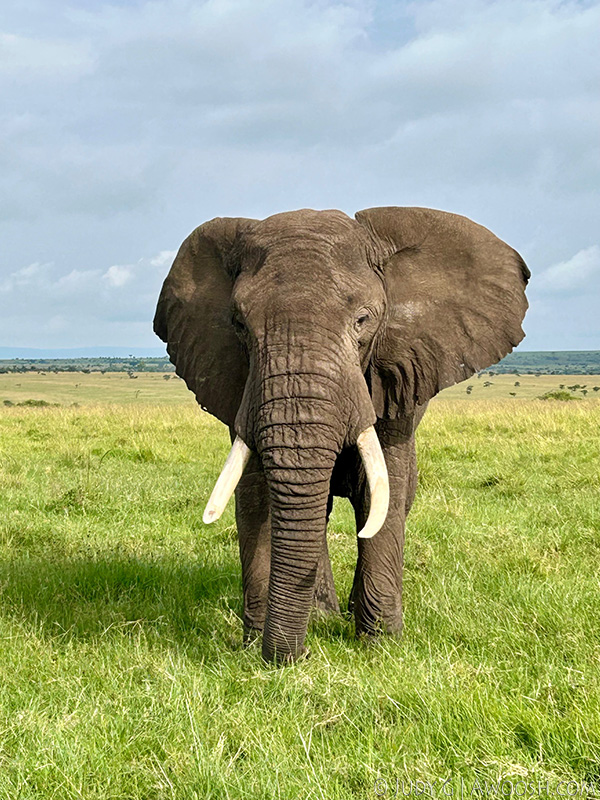
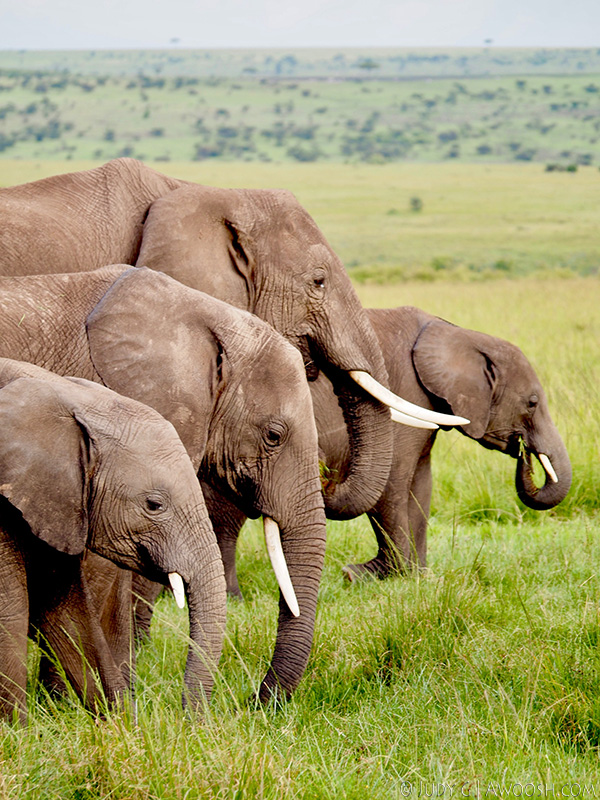
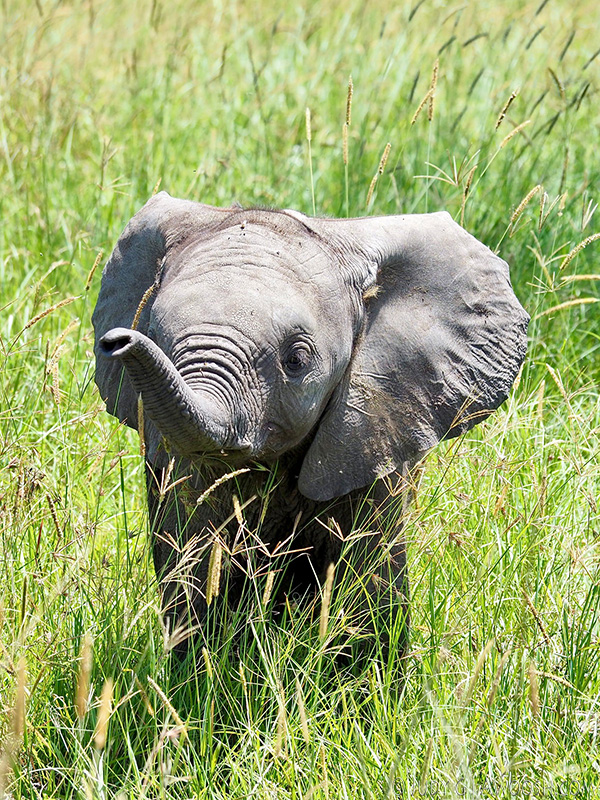
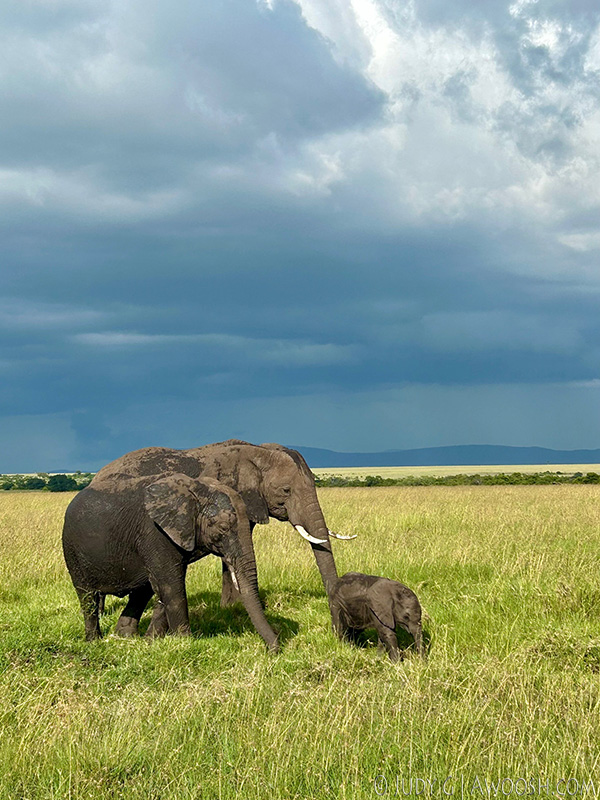
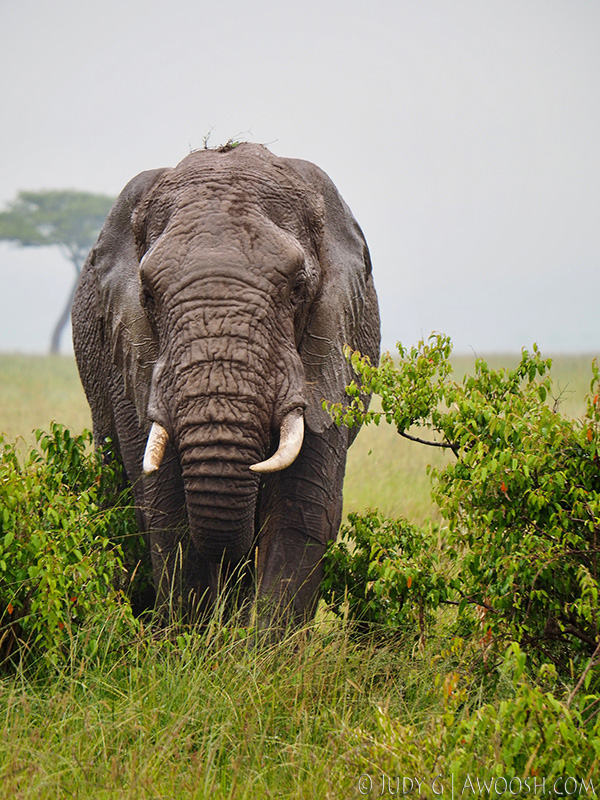
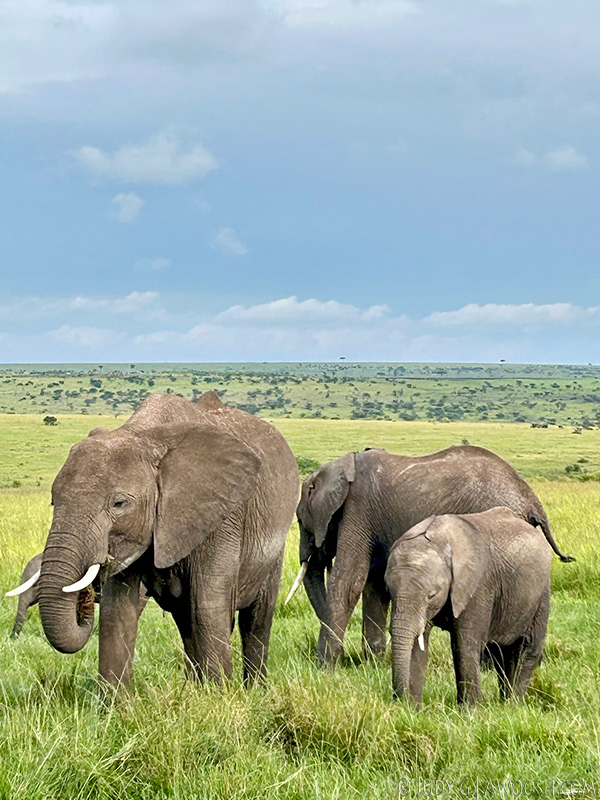
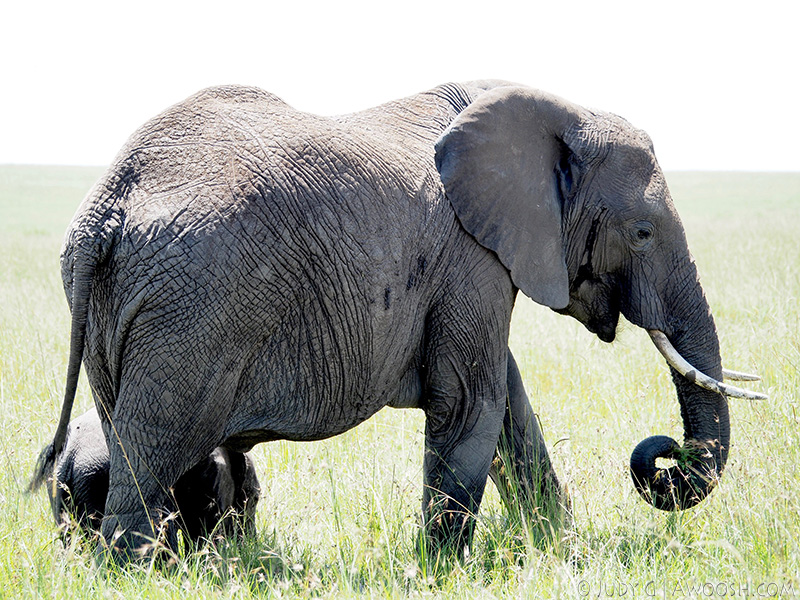
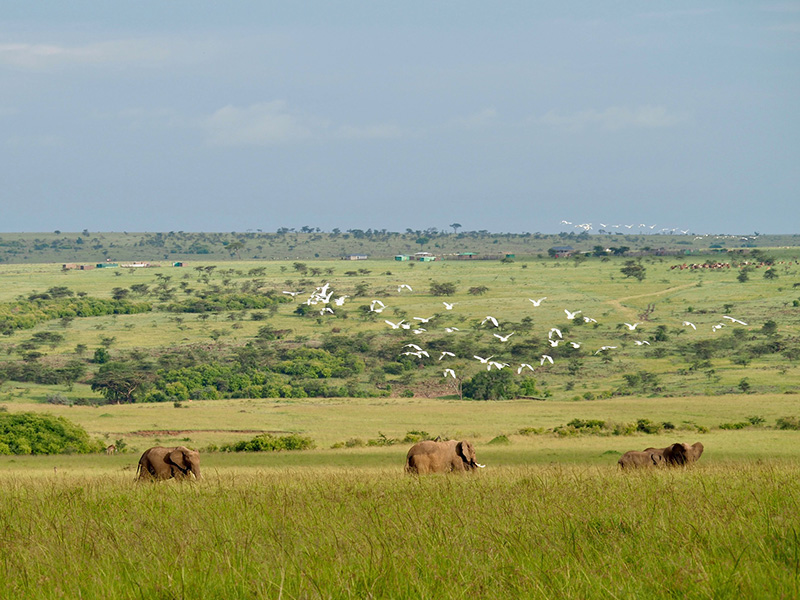
But the Mara is not just about elephants. There were many photo ops at Elephant Pepper. Here are a few more pix to illustrate:
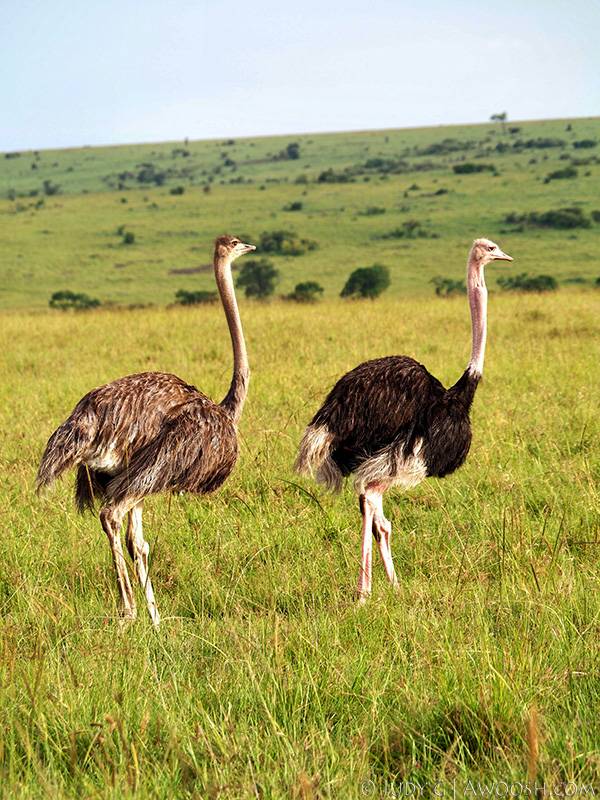
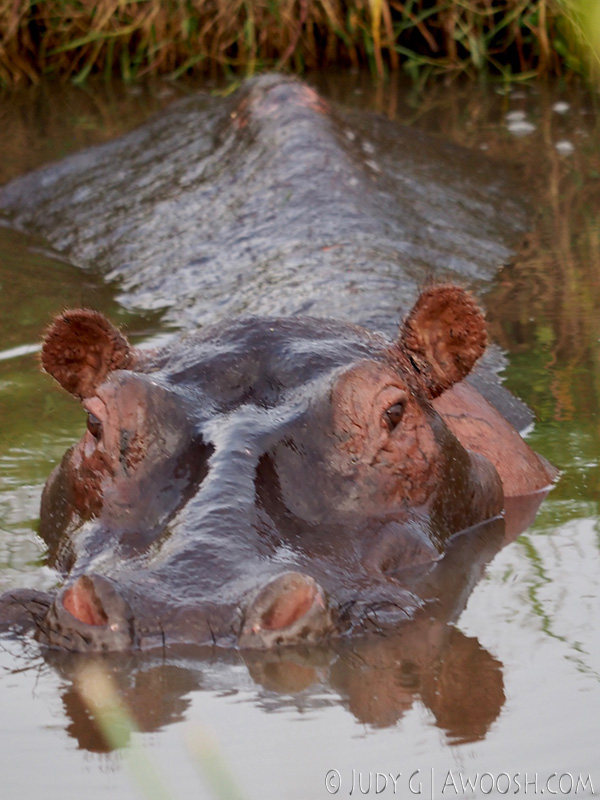
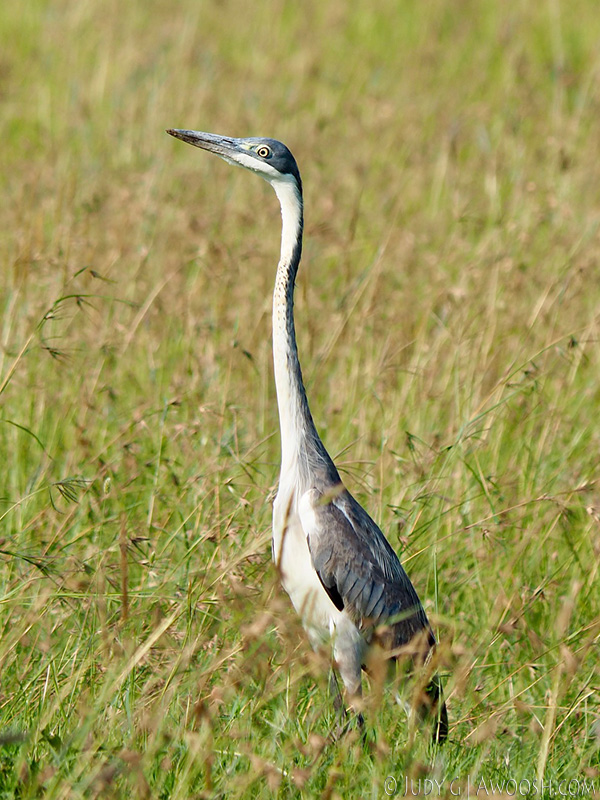
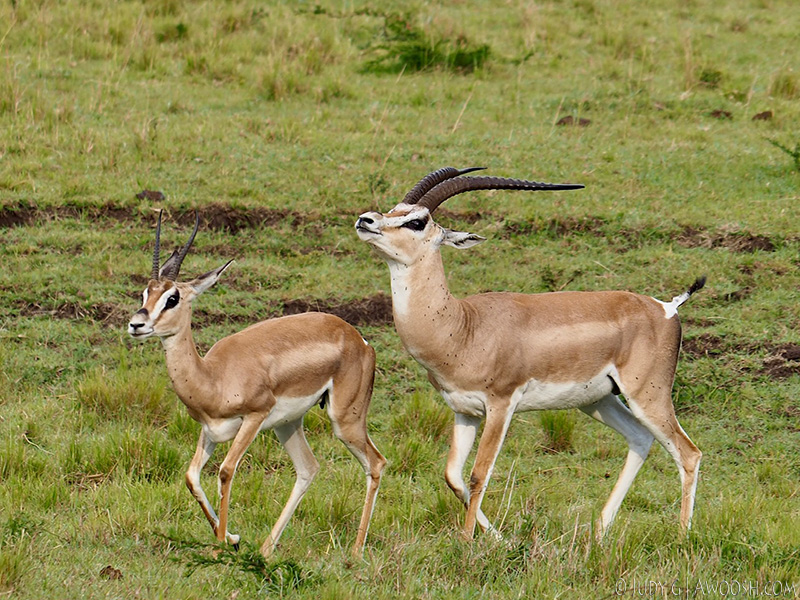
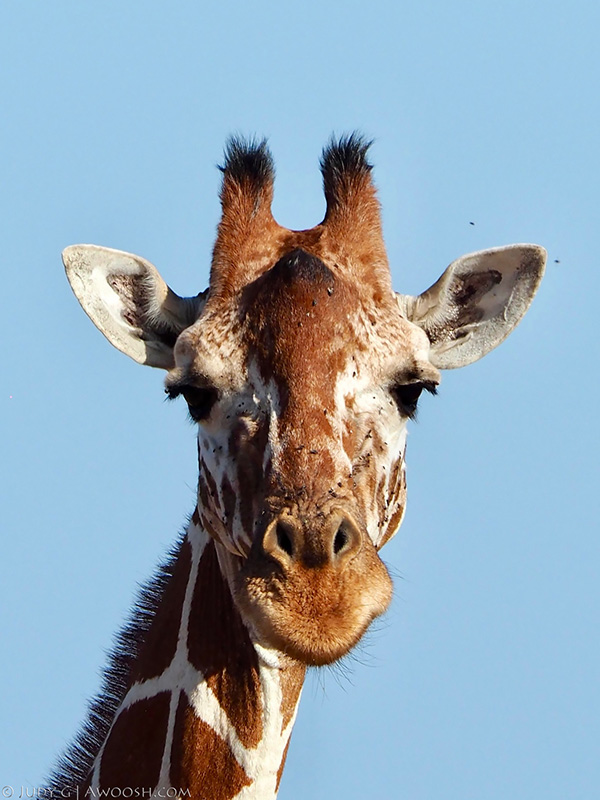
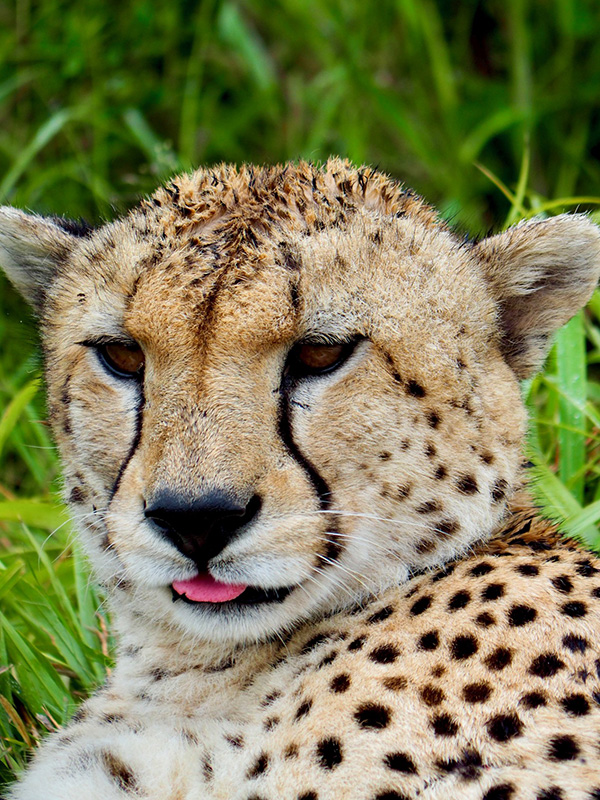
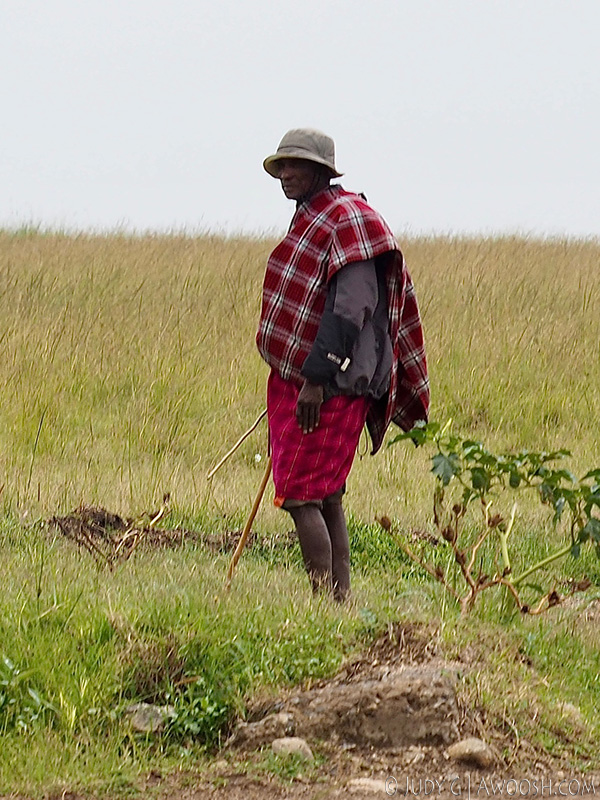
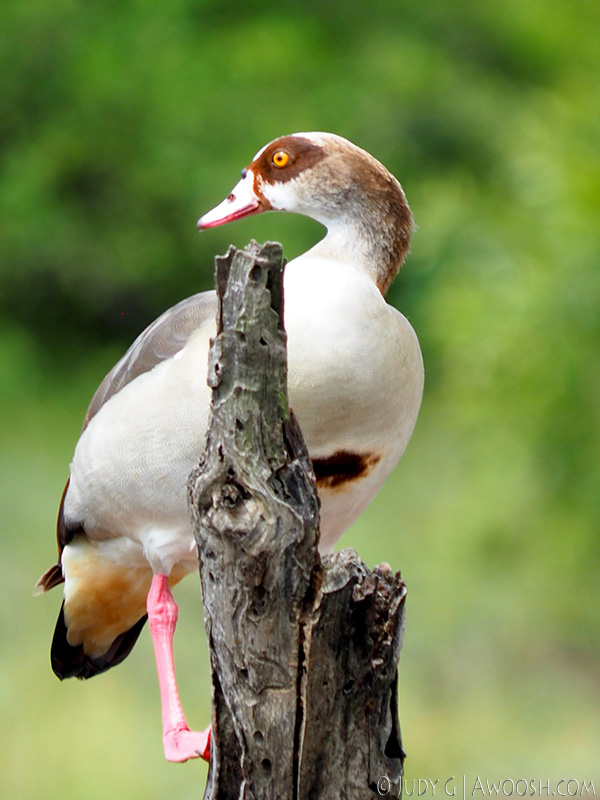
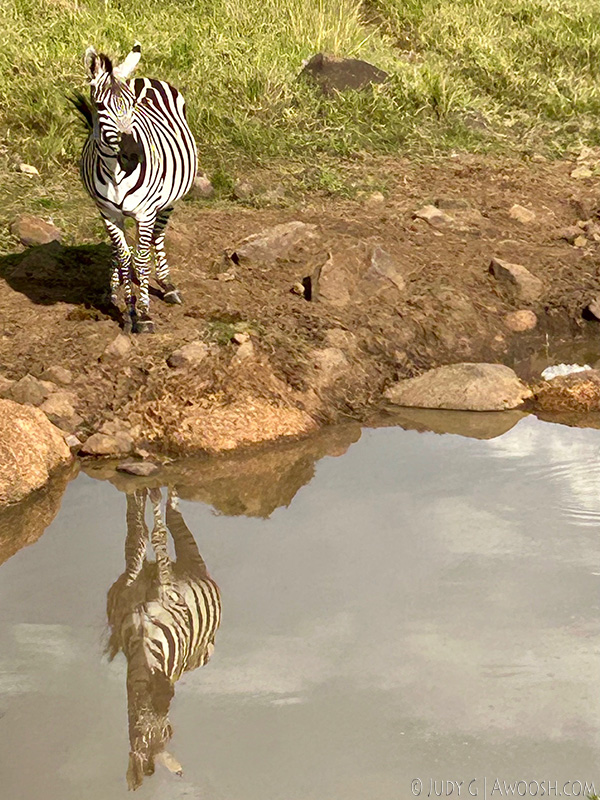
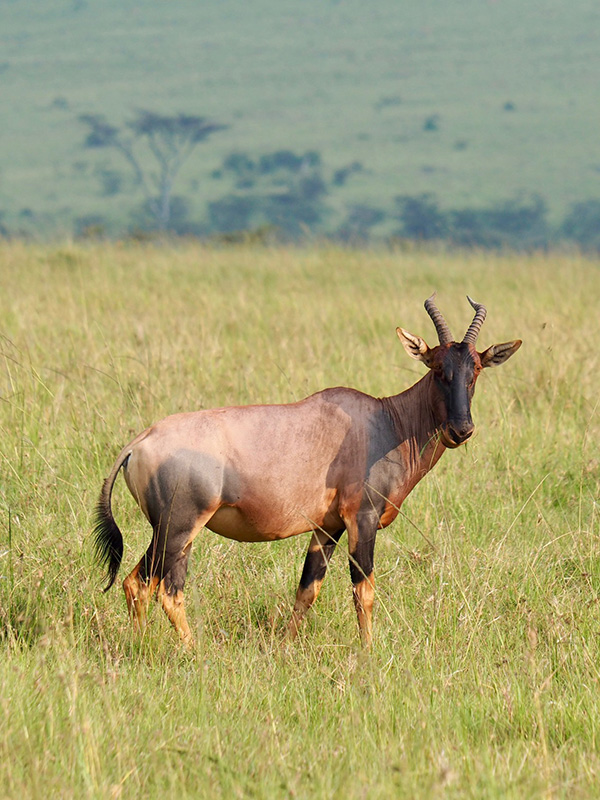
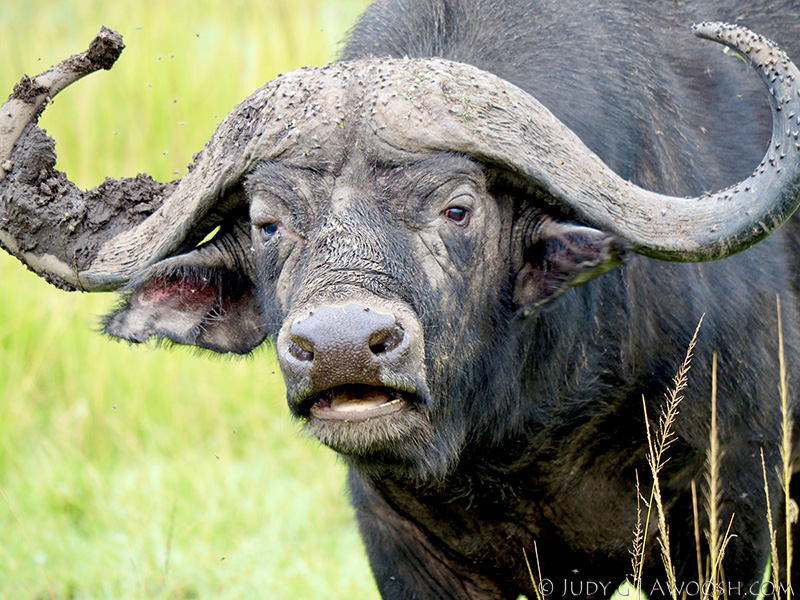
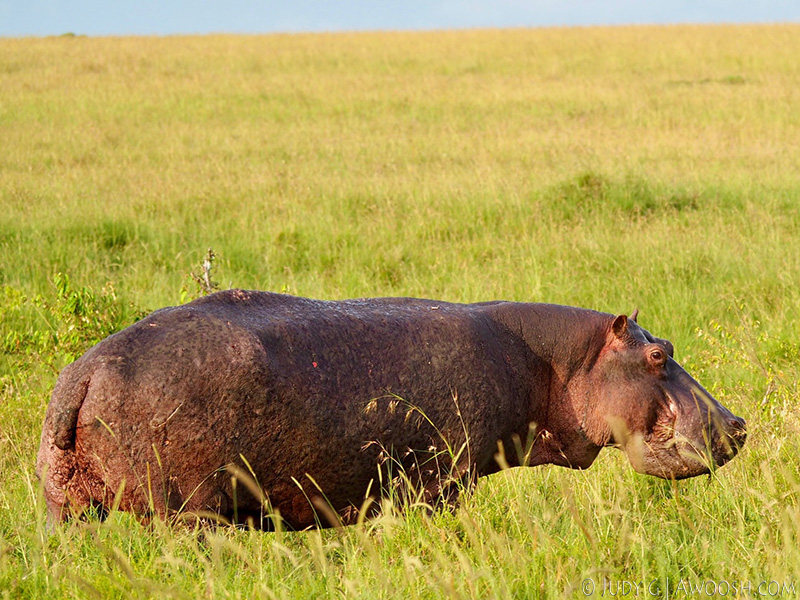
And then, it was over. Three camps, twelve days of safaris, umpteen animal sightings, an elephant hug, Samburu stories, bush flights, fantastic guides, fantastic food (at all 3 camps), scenic sundowners, bush breakfasts, beautiful and benevolent Kenyan hospitality. We were happy campers.
It is heartwarming to see how much the Kenyans love their country, how proud they are of it, how they clearly understand the necessity and benefits of the conservation of huge areas, and the policies to prevent further poaching of wild game. The Kenyans that we met along the way were all so kind and welcoming, and were fantastic hosts.
Single-use plastics were wisely banned in the country about six years ago, and the lack of garbage littering both Nairobi and the more rural areas that we visited was notable.
It is said that Africa gets in your blood (hopefully not malaria, for which we all took prophylactic meds!) — what I mean by that is that you feel changed after experiencing wild Africa. The only equivalent I can compare it to is doing some fantastic diving in remote, unspoiled locations like Raja Ampat in Indonesia, or the Tubbataha atolls in the Philippines, or the stunningly beautiful reefs and bommies of the Va-tu-i-ra Passage in Fiji. Going on safari is like a land dive — immersive, meditative, and awe-inspiring.
I want to go back…
The End
Part 1 is here: Nairobi
Part 2 is here: Elsa’s Kopje in Meru National Park
Part 3 is here: Sarara Lodge in Nemunyak Community Conservancy

